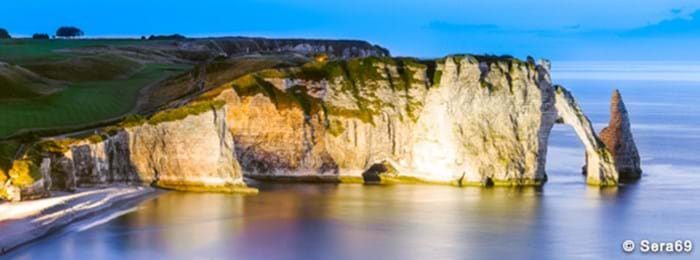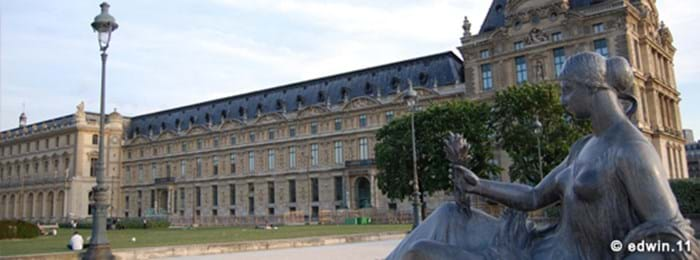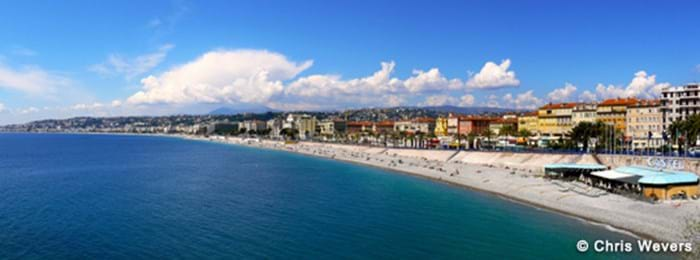Follow in the footsteps of famous French artists
Painters, writers and musicians throughout history, have travelled to France to find inspiration. But what about its home-grown artistic greats? Famous French artists, from Monet to Matisse, draw in millions of visitors to the country each year – looking to catch a glimpse of the scenes, atmospheres and locations in France that inspired the artists' life and work. Here are some highlights for an art-themed stop on
your holiday.
Claude Monet in Normandy
The craggy cliffs of Normandy were one of Claude Monet's (1840-1926) biggest inspirations. Monet and many other impressionist painters chose the looping river Seine and battered cliffs in northern France as their subjects. The region's capital, Rouen, makes a perfect stop off on your art tour. See the cathedral immortalised in Monet's series of 30 paintings. Between 1892 and 1893, Monet painted Rouen Cathedral's façade from different angles, at different times of the day and in different seasons. The series had a huge influence on artists such as Degas, Cézanne and Renoir and on the development of the impressionist movement in France.
Take a trip to the Rouen Fine Arts Museum to see some of the best 20th century artworks. Or, admire the reality of the cathedral for yourself and maybe have a go at capturing your own impression of this striking building.
You can also check out the charming harbour of Le Havre where Monet painted his Impression, Sun Rising (1872). Or, climb the striking cliffs at Etretat, where Monet and others caught the effects of light and atmosphere in their seascapes.

Getting there: Rouen is a 2-hour drive west from Eurotunnel Le Shuttle's Calais terminal, following the A16 and A28. Le Havre is a short 1-hour drive north from Rouen along the A13 and A131, and Etretat, a further 30-minute coastal drive along the D940 from Le Havre.
The spirit of Paul Cézanne in Aix-en-Provence
The peak of Montagne Sainte-Victoire looms large while cypress trees and rooftops stretch across the rolling hills below. This is the awe-inspiring landscape, in Aix-en-Provence, that Paul Cézanne (1839-1906) was compelled to paint 87 times. In fact he was so enamoured with it he had his house and studio purpose built on Lauves Hill to get clear views of the mountain.
Cézanne's tiny house remains, as he left it - his hat hangs on the peg and even a wine glass stands on the desk. The good news is that it's open to curious visitors. Walk through the studio and you'll spot objects that appear in his still life paintings, like the empty bottles and the armless cherub figurine - the subject of Still Life with Plaster Cast (1894). Check opening times and book ahead to avoid disappointment.
After taking in the serene views of Montagne Sainte-Victoire and the ambience of Cézanne's studio, you can pop into Les Deux Garçons café, in Aix, where Cézanne could often be found sipping vermouth.
Getting there: Aix-en-Provence is a 1 hour 40 minute drive from Nice, along the A8.
Edouard Manet's depictions of modern life
in Paris
In 19th century Paris, its boulevards, cafés and parks were places of entertainment. Edouard Manet (1832–1883) was one of the first 19th century artists to paint this 'modern life' of consumer culture, inspiring future impressionists including Degas, Monet and Renoir.

Rejecting conventional themes of art like religion or mythology, Manet preferred to paint ordinary Parisians and held the view, "one must be of one's time and paint what one sees". Radical at the time, his approach gained him admiration from avant-garde artists, having freed painting from story-telling.
One of Manet's favourite spots was the Jardin des Tuileries. Formerly a palace garden, the Jardin des Tuileries became a public park in 1667. By the 19th century it featured cafes, kiosks and deck chairs and became the place to see and be seen. Manet's painting Music in the Tuileries Gardens (1862) shows a fashionable crowd who have gathered to listen to the band. He even painted himself (and his friends and family) into the scene.
Today, you can take a stroll around the gardens or grab a free chair to relax in. Pop into the Musée de l'Orangerie, in the west corner of the gardens, to see impressionist and post-impressionist paintings including Claude Monet's famous Water Lily murals. You'll find the Jardin des Tuileries between the Louvre and the Place de la Concorde in the heart of Paris.
Getting there: Paris is a 2 hour 50 minute drive from Eurotunnel Le Shuttle's Calais terminal following the A26 and A1.
Matisse and the French Riviera
Henri Matisse (1869-1954) found inspiration in the breath-taking coastline of the Côte d'Azur. Matisse spent over 40 years of his life in Nice from 1917 until his death in 1954. During this time his art transformed as he turned back to still life, interiors and landscapes. Colourful and decorative, his Nice paintings capture sunny southern France but bear little resemblance to the modernism of his earlier work.
Matisse painted the interiors of grand seafront hotels often including windows and doors, offering a glimpse of Nice below or the intense blue of the sea and sky. He captured the beauty and light of the Côte d'Azur in works like The Open Window (1918) and The Bay of Nice (1918).

Get an artist's view by booking yourself a room in a seafront hotel or strolling along the city's beautiful Promenade des Anglais, lined with palm trees. You can head to hilly Cimiez and gaze up at the Ancien Hôtel Régina, where Matisse lived. Built in 1896, for English aristocrats the hotel was converted into flats and now houses the city's wealthy residents. Just across the street is the Musee Matisse, filled with paintings, sculptures and Matisse's personal possessions. Here, you can learn more about the locations of the Côte d'Azur that inspired this prolific French artist.
Getting there and around
From Calais, drive south along the A26 (approximately 10 hour 30 minutes) to reach Nice. Or, it's an 8 hour drive from Paris following the A6 and A7.
Book your journey